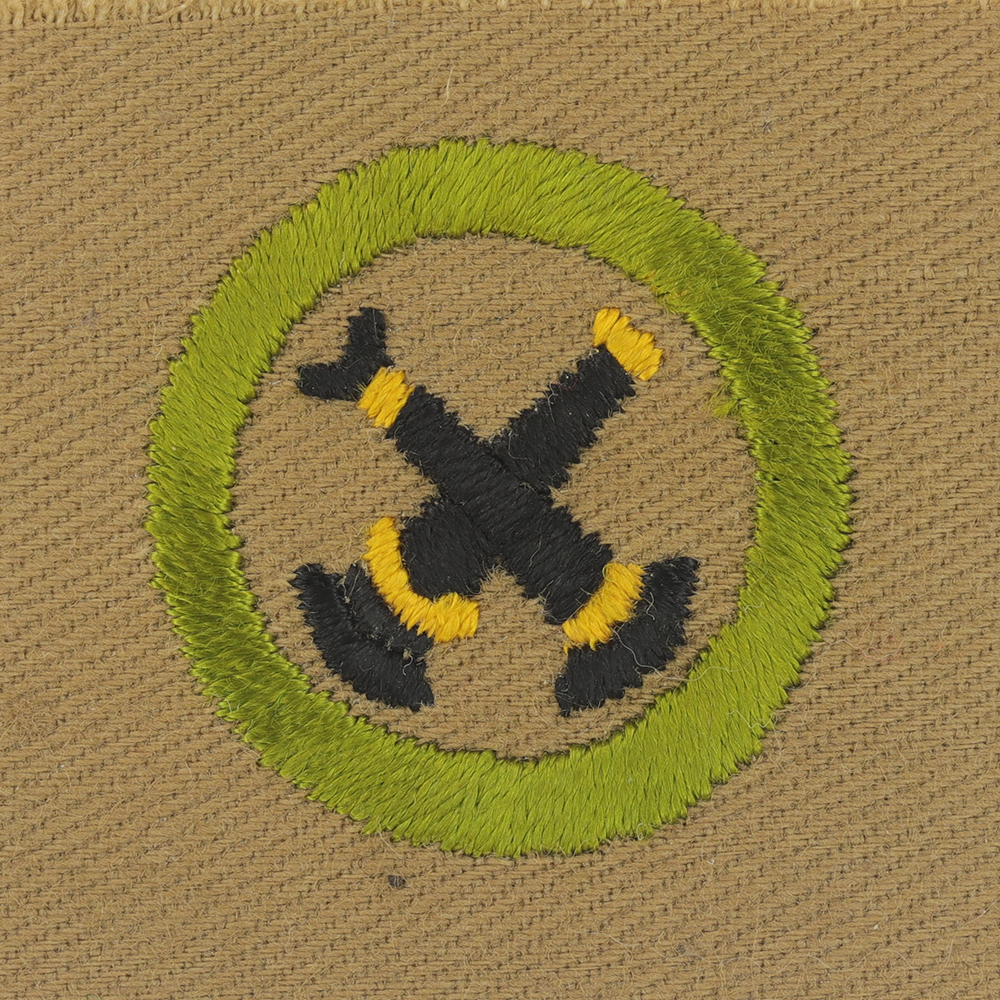
Fig. 1: Firema-AT1-Front
- Cloth: Heavyweight tan right twill
- Embroidery: Silk continuous
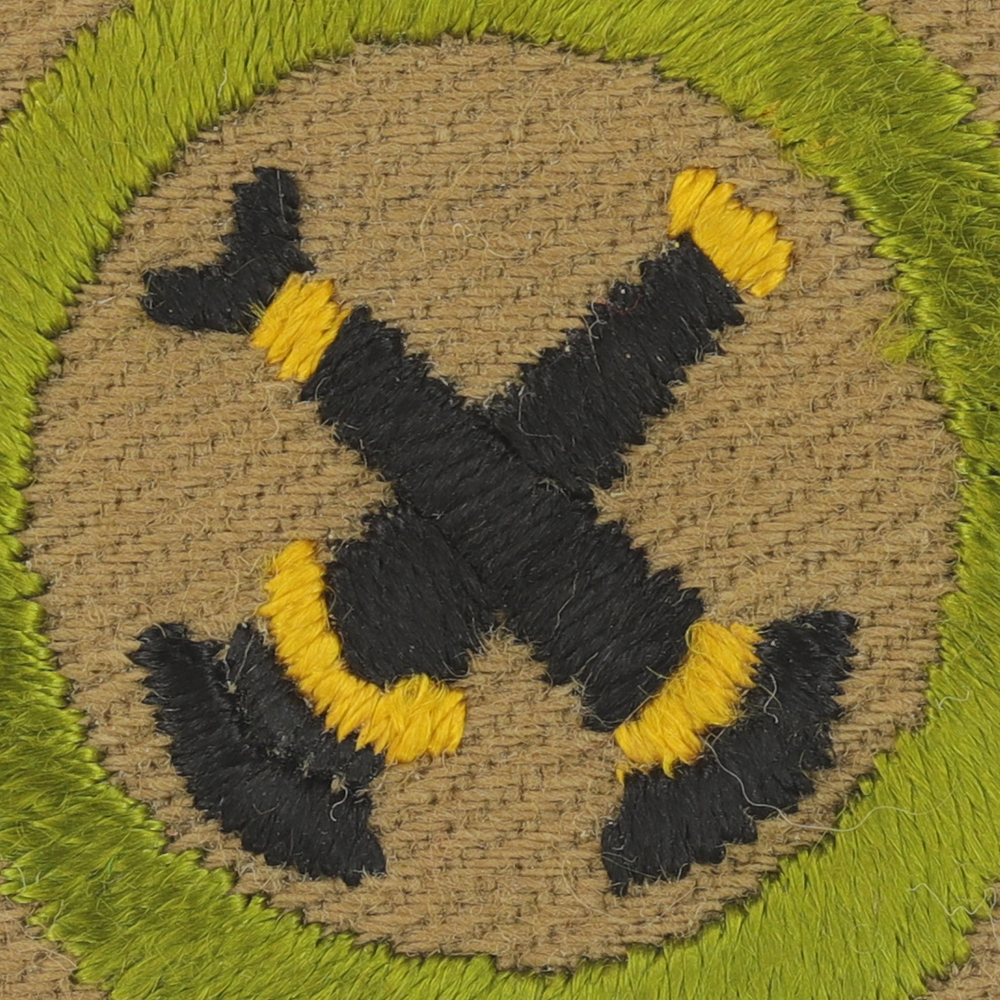
Fig. 2: Firema-AT1-Magnified
- Design: One black, one gold hose fitting
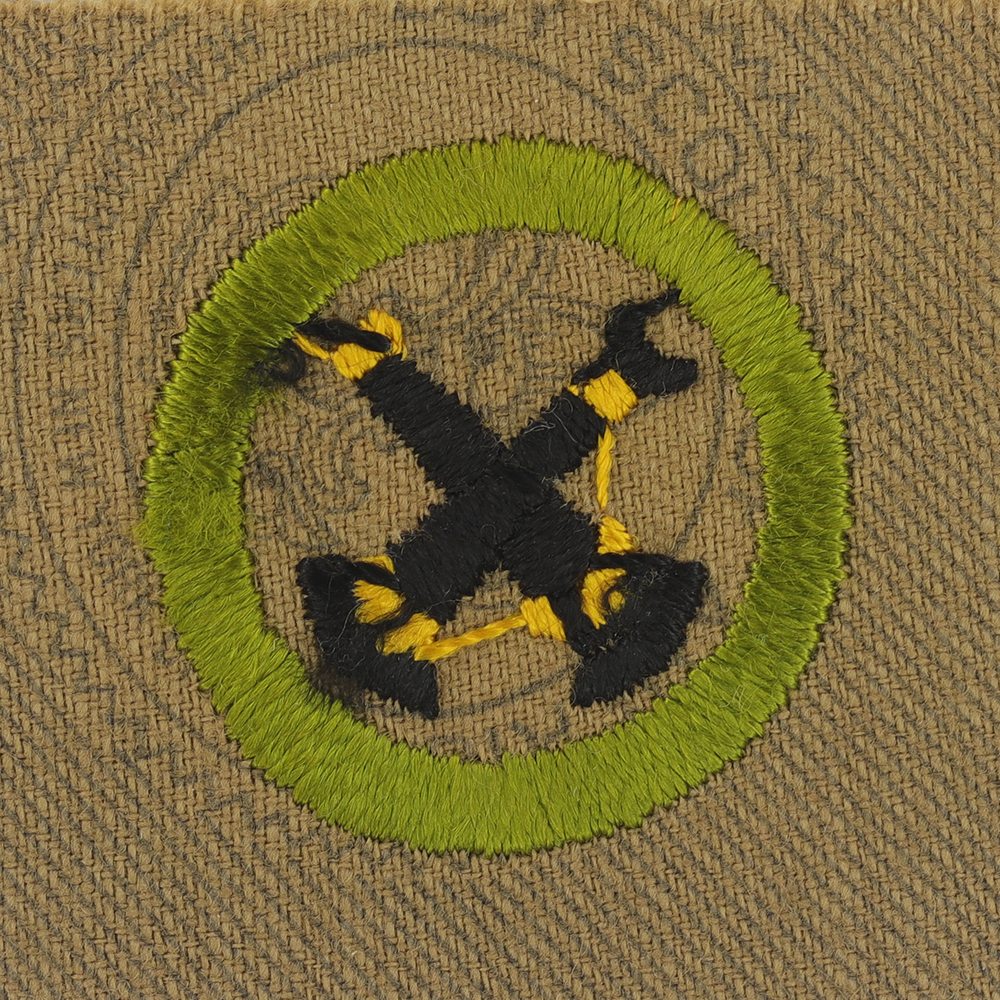
Fig. 3: Firema-AT1-Reverse
- Back: Black imprint
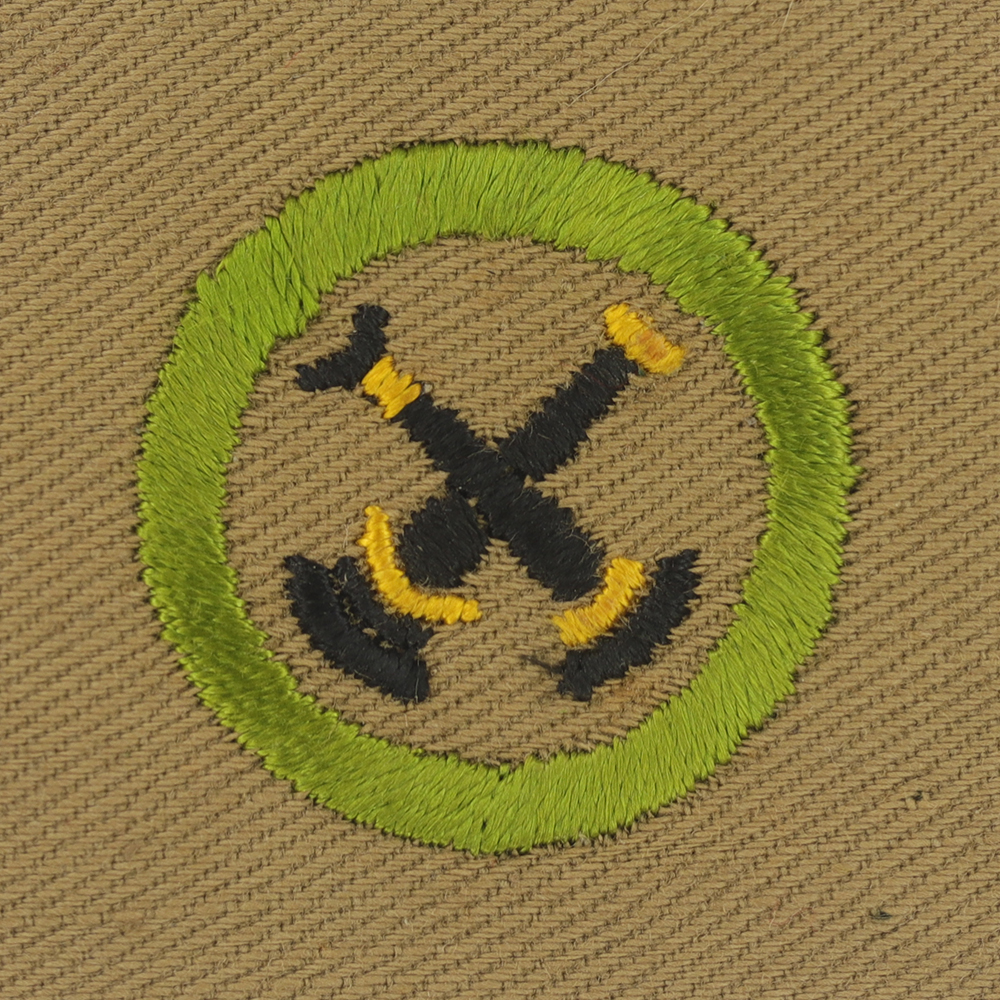
Fig. 4: Firema-AT1-mve1-front
- Minor variation: Nozzle size differences
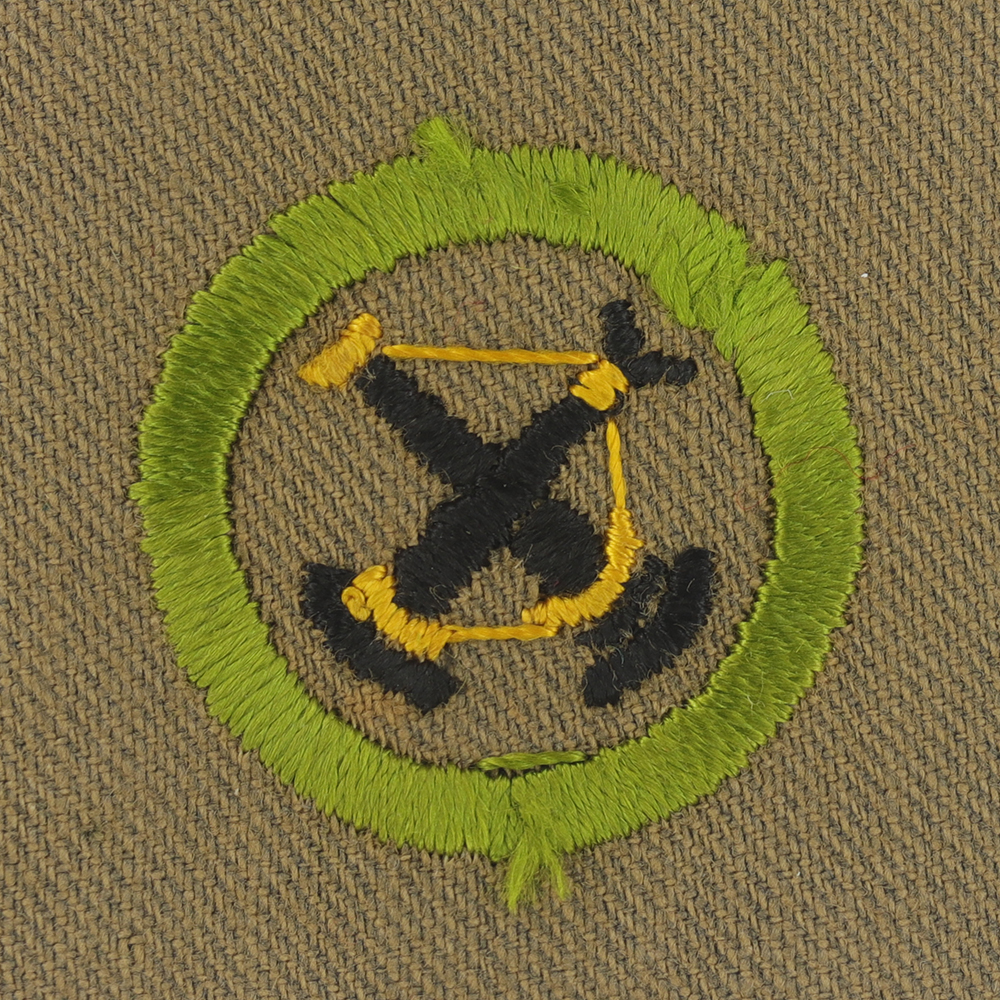
Fig. 5: Firema-AT1-mve1-reverse
- Back: Black imprint
Item Name: Firemanship 1920 - 1933
Item ID: Firema-AT1
Collector Rating: 1
Pamphlets Used to Earn this Badge
Requirements August 1911 until August 1922
1. Know how to turn in an alarm for fire.
2. Know how to enter burning buildings.
3. Know how to prevent panics and the spread of fire.
4. Understand the use of hose, - unrolling, joining-up, connecting to hydrant, use of nozzle, etc.
5. Understand the use of escapes, ladders, and chutes, and know the location of exits in buildings which he frequents.
6. Know how to improvise ropes and nets.
7. Explain what to do in case of panic, understand the fireman's lift and drag, and how to work in fumes.
8. Understand the use of fire extinguishers; how to rescue animals; how to save property; how to organize a bucket brigade; and how to aid the police in keeping back crowds.
Requirements August 1922 until July 1933.
1. Demonstrate how to turn in an alarm for fire.
2. Demonstrate how to enter burning buildings.
3. Demonstrate how to prevent panics and the spread of fire.
4. Understand the use of hose - unrolling, joining-up, connecting to hydrant, use of nozzle, etc.
5. Understand the use of escapes, ladders, and chutes, and know the location of exits in buildings which he frequents.
6. Demonstrate how to improvise ropes and nets.
7. Explain what to do in case of panic, understand the fireman's lift and drag, and how to work in fumes.
8. Demonstrate the use of fire extinguishers; how to rescue animals; how to save property; how to organize a bucket brigade; and how to aid the police in keeping back crowds.
Requirements July 1933 until September 1945
1. Describe in his own words, the contrast between fire as man's servant (under control), and that same fire as man's enemy (beyond control). From actual incidents, of which he knows personally or has read, describe the loss and other harm which resulted from lack of proper fire protection both in the case of a home and a community. Give statistics indicating the average yearly loss of life and property due to fire.
2. Demonstrate or submit sketches illustrating two of the following:
(a) Proper building of camp fire with relation to inflammable material both around and under place where fire is laid;
(b) How to extinguish a camp fire;
(c) Three practical methods of forest fire prevention;
(d) Three simple methods of forest fire fighting where elaborate equipment is not available.
3. (a) Give three most common causes of fire in the home, other than careless use and storage of gasoline, and tell how each may be guarded against or prevented.
(b) What precautions should be taken for safe use and storage of gasoline and other inflammable liquids.
(c) Submit practical plan of action for the safe escape of the whole household, including himself in case of fire at night; such plan to include:
(1) Diagram of the floors on which family sleeps and of the floors below, if any;
(2) Details of how he would rouse the family and direct their escape;
(3) List of fire protection equipment necessary in his home, depending upon whether he lives in urban or rural community.
4. Personally conduct at least one fire drill in his Troop meeting place.
5. Demonstrate:
(a) How to light and discard a match safely;
(b) With another Scout as subject, what to do in case latter's clothes become ignited, both where blanket or rug is available, and where no such aid is available;
(c) With several other Scouts, formation of a "bucket brigade";
(d) How to make a satisfactory fire pail from a No. 10 can;
(e) What he would do if caught in a room filled with chemical fumes or smoke;
(f) How to extinguish fire under hood of automobile.
6. Explain:
(a) At least two causes which are likely to result in spontaneous combustion and how it may be prevented in each case;
(b) Three ways of turning in a fire alarm, citing best local method and giving exact location of nearest fire alarm to his home, Troop meeting place, and place of employment or school;
(c) Principles underlying at least three common types of fire extinguishers and how to operate each;
(d) Precautions and measures he would take to rescue animals from a burning stable.



